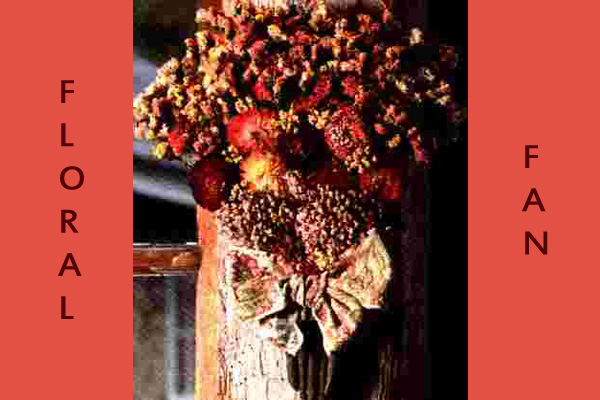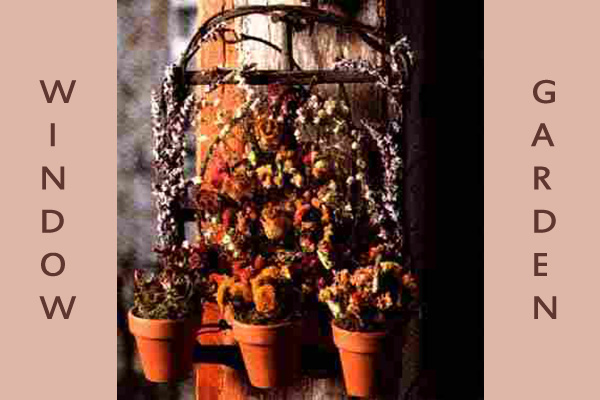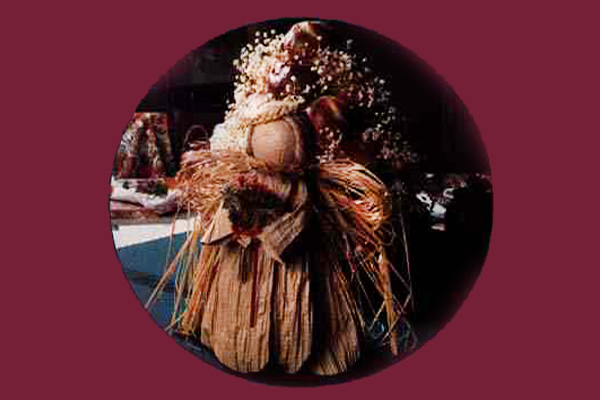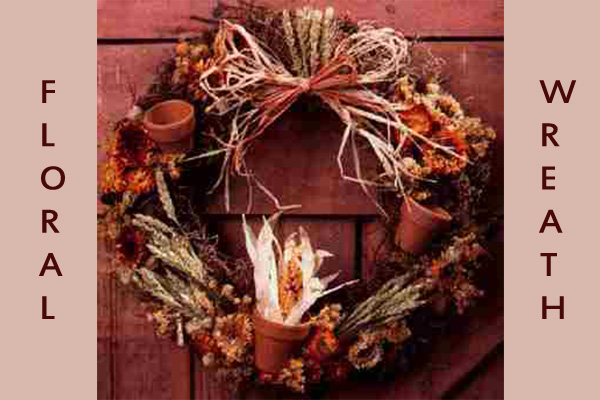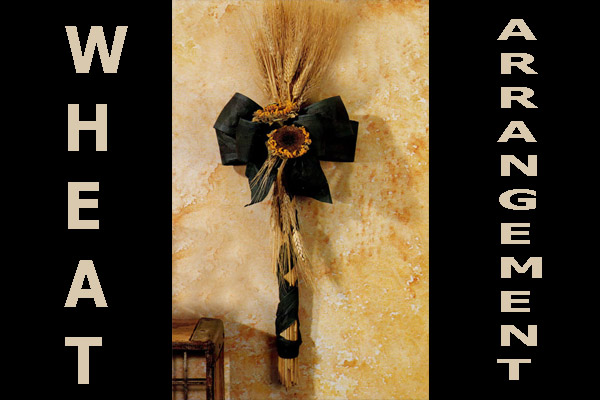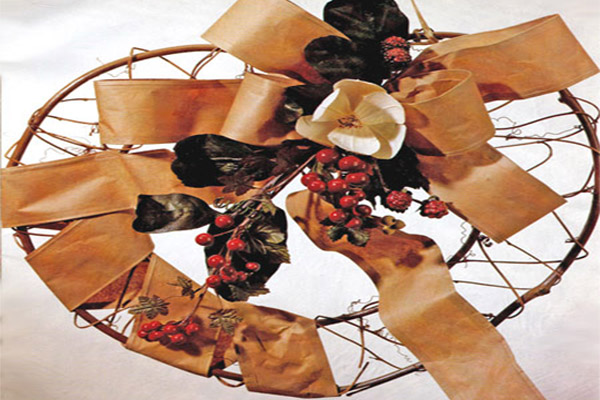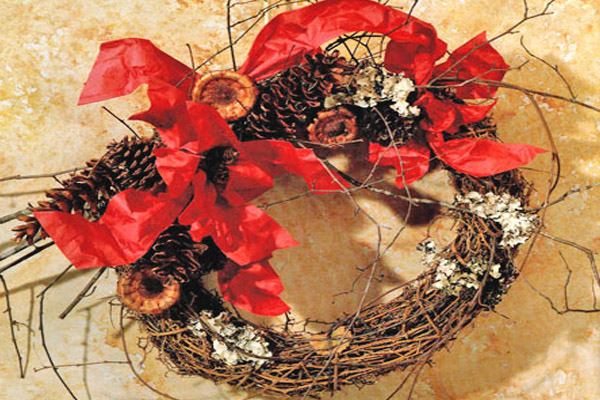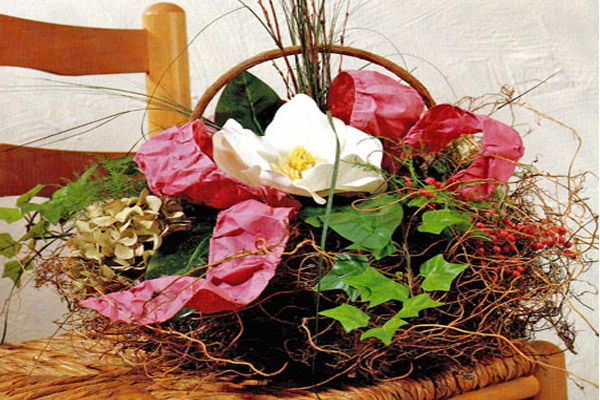Great Craft Projects
Surprise your loved ones with great craft creations...
Glycerizing Method
Glycerizing method cannot be used successfully with in drying flowers, but it is the best method for most foliages. Glycerinizing technique will darken the natural color of most plants but will keep the leaves and stems soft, pliable and long lasting so they may be used over and over. They will retain the fragrance and remain beautiful for many years.
Mature leaves work best, but younger leaves can be preserved, too. This method is ideal for magnolia, eucalyptus, boxwood, camellia, rhododendron, beech etc.
Plants treated this way cannot be consumed, they can be used for decorative purposes only. It takes two to three weeks for this drying process to be completed. This is not a cheap method.
NOTE: Technical glycerin can be obtained from your local pharmacist.
Glycerizing Method: Step-By-Step Instructions
 Select only perfect specimens and wash them in water to remove all dust and dirt. Branches of mature leaves should be no longer than 18 to 20 inches, including the part of the stripped stem that is in the jar with glycerin/water mixture.
Select only perfect specimens and wash them in water to remove all dust and dirt. Branches of mature leaves should be no longer than 18 to 20 inches, including the part of the stripped stem that is in the jar with glycerin/water mixture.
 Cut off the lower inch of stem in order to remove the air bubble which prevents the easy flow of liquid.
Cut off the lower inch of stem in order to remove the air bubble which prevents the easy flow of liquid.
 Crush the lower 2 inches of the branch ends with a hammer and place the stems upright in a container or a jar containing 1:2 glycerin/water mixture (1 part glycerine and 2 parts hot water). Some heavy leaves require a half-and-half mix. Keep the solution depth at about 3 to 4 inches.
Crush the lower 2 inches of the branch ends with a hammer and place the stems upright in a container or a jar containing 1:2 glycerin/water mixture (1 part glycerine and 2 parts hot water). Some heavy leaves require a half-and-half mix. Keep the solution depth at about 3 to 4 inches.
 Allow the stems to take up and translocate a glycerin/water mixture.
Allow the stems to take up and translocate a glycerin/water mixture.
 Tip: To increase the uptake rate of the glycerin solution you can place the plant material in a salt solution (1 tablespoon table salt/ gallon water) for 24 hours before placing them in the glycerin solution. The plants should have the bottom of their stems freshly cut.
Tip: To increase the uptake rate of the glycerin solution you can place the plant material in a salt solution (1 tablespoon table salt/ gallon water) for 24 hours before placing them in the glycerin solution. The plants should have the bottom of their stems freshly cut.
 Leaves that are thick and waxy, younger leaves and some low-growing plants that absorb moisture through their leaves, can be immersed in 1:1 glycerine/water solution.
Leaves that are thick and waxy, younger leaves and some low-growing plants that absorb moisture through their leaves, can be immersed in 1:1 glycerine/water solution.
Important: Remember that the cut branches will take up the glycerin/water mixture and you will probably need to add more of the glycerin solution to the jar for the first few days, when absorption is most rapid, to keep 3 inches of stem covered.
 The plants should remain in the solution until full absorption has taken place. The leaves will change color with absorbtion and you’ll know the process is complete when the color is the same all the way to the edge of the leaf. Don't leave plants to long in the mixture because the leaves get droopy. To remove excess moisture they should be wiped thoroughly with a soft cotton cloth and then hung upside down for few days. Before being stored the material should be wiped off one more time.
The plants should remain in the solution until full absorption has taken place. The leaves will change color with absorbtion and you’ll know the process is complete when the color is the same all the way to the edge of the leaf. Don't leave plants to long in the mixture because the leaves get droopy. To remove excess moisture they should be wiped thoroughly with a soft cotton cloth and then hung upside down for few days. Before being stored the material should be wiped off one more time.
 For best results, use glycerizing method during the summer months as the foliage will absorb the solution quickly. Make sure you have a good air circulation when using glycerizing method because bad air circulation could cause mold.
For best results, use glycerizing method during the summer months as the foliage will absorb the solution quickly. Make sure you have a good air circulation when using glycerizing method because bad air circulation could cause mold.
 Glycerin process changes the colors of some plants more than others, depending on the maturity, variety and the length of time plants are left in the solution. You can add food coloring to the solution to change the color. The color resulting depends on how much color you use and how long you leave the herb in the mixture.
Glycerin process changes the colors of some plants more than others, depending on the maturity, variety and the length of time plants are left in the solution. You can add food coloring to the solution to change the color. The color resulting depends on how much color you use and how long you leave the herb in the mixture.
Other Common Methods to Preserve Plants:
Great Craft Projects
Autumn Window Garden
Perfect combination for autumn captured forever and country...
Paper Twist Doll
To make this paper twist doll you will need...
Dried Floral Wreath
Create something lovely for the perfect fall accent...
Sheaf of Wheat Arrangement
To make this sheaf of wheat you will need...
Magnolia Heart Wreath
You will enjoy this magnolia heart wreath...
Warm Winter Wreath
Give your family a reason to love winter...
Magnolia Basket
Make this beautiful basket your weekend project ...
Did You Know?
Cheese fondue was invented out of necessity. In the remote and isolated mountain villages in the Swiss Alps people had to rely upon locally made food. During winter, fresh food became scarce. The Swiss found that melting stale cheese made it edible. Local wines and seasonings were added and even the dry and hard bread tasted delicious after it was swirled in the creamy melted cheese.
Fondue became popular in the United States during the mid-1960s after American tourists discovered it in Switzerland.

